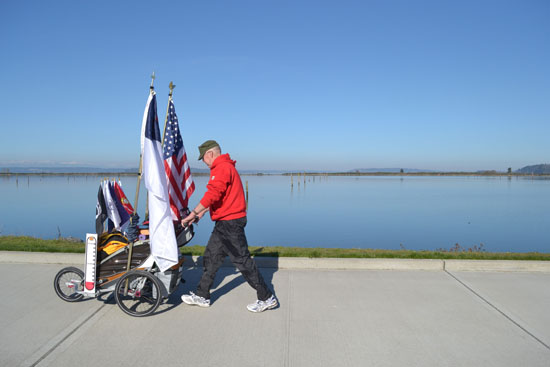By Jeff Hargarten, News21
The Veterans Crisis Line, managed by the U.S. Department of Veterans Affairs, has experienced steady increases in calls, texts and chat sessions from former soldiers struggling with suicidal thoughts since its launch. Counselors have answered about 840,000 calls since the crisis line started in 2007, according to VA statistics.
Online chat sessions since 2009, and text messages since last year, also have increased.
“The phone has not stopped ringing,” said Jan Kemp, the VA national suicide prevention coordinator and program manager of the crisis line.
Crisis counselors fielded 9,379 calls in the first year. Each year the call volume has increased, reaching a high of 193,507 calls in fiscal year 2012. Through April 2013, more than 151,000 callers have asked for help. Chat sessions leaped from 864 in fiscal year 2009 to about 45,000 in 2012. Text messages also have exceeded 4,300 in this fiscal year, up from 3,800 last year.
Kemp was skeptical that veterans would call the crisis line, she said. Now 800 to 1,000 calls daily reach the crisis line, she said, along with chats and texts.
A 2012 VA report found 19 percent of callers to the VCL call more than once per month and that most callers are male aged between 50 and 59. Also, the percentage of those thinking of suicide when calling the VCL has decreased, as have calls resulting in rescues from suicide attempts.
Initially calling it the Veteran Suicide Hotline, the VA found that veterans were less likely to call if they weren’t feeling imminently suicidal. The name was changed and that made a “huge difference” in the number of veterans using the line, Kemp said.
The line isn’t merely for those with suicidal feelings, but those experiencing any kind of crisis, Kemp said, to help head off possible future suicidal tendencies.
There are nearly 21.5 million veterans in the United States, according to the 2011 American Community Survey conducted by the U.S. Census Bureau. The VA estimates 22 veterans die by suicide each day, according to a 2012 report. But officials said that rising suicide rates don’t indicate that the VCL is ineffective.
“We have to ask: what would the suicide rate be if we weren’t doing these programs? It seems like it might be worse,” said Craig Bryan, associate director of the National Center for Veterans Studies at the University of Utah.
The VA also started Make the Connection, a campaign that includes a website with information on common mental health symptoms and conditions, links to screening resources and a video series where veterans talk about their personal struggles.
The Veterans Crisis Line can be reached online or by calling 800-273-8255.



